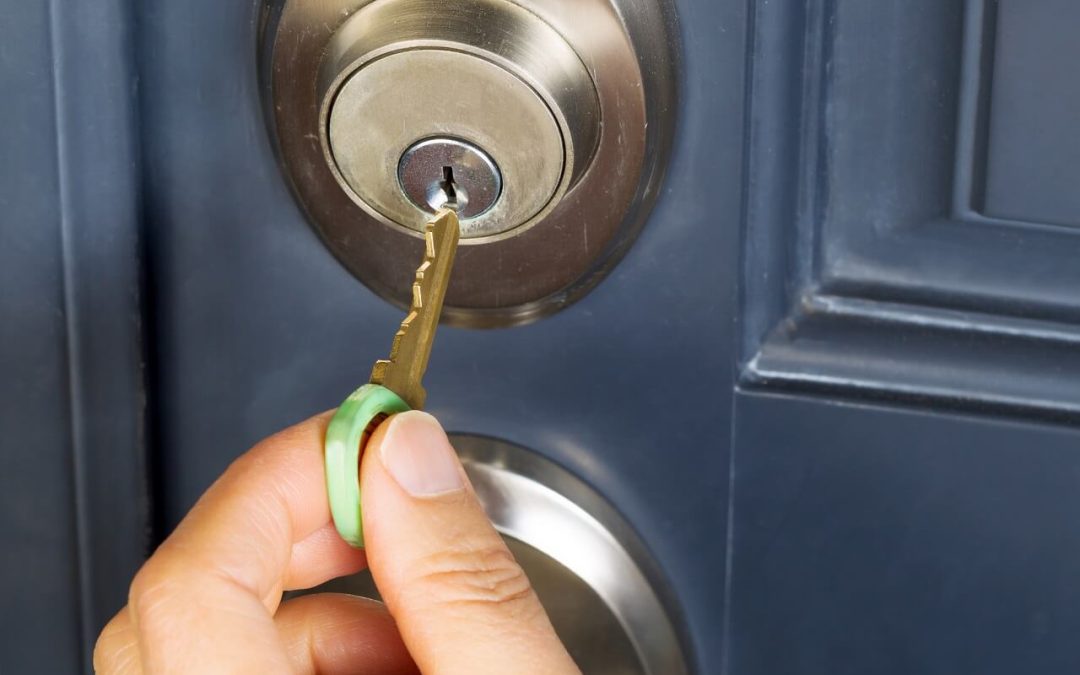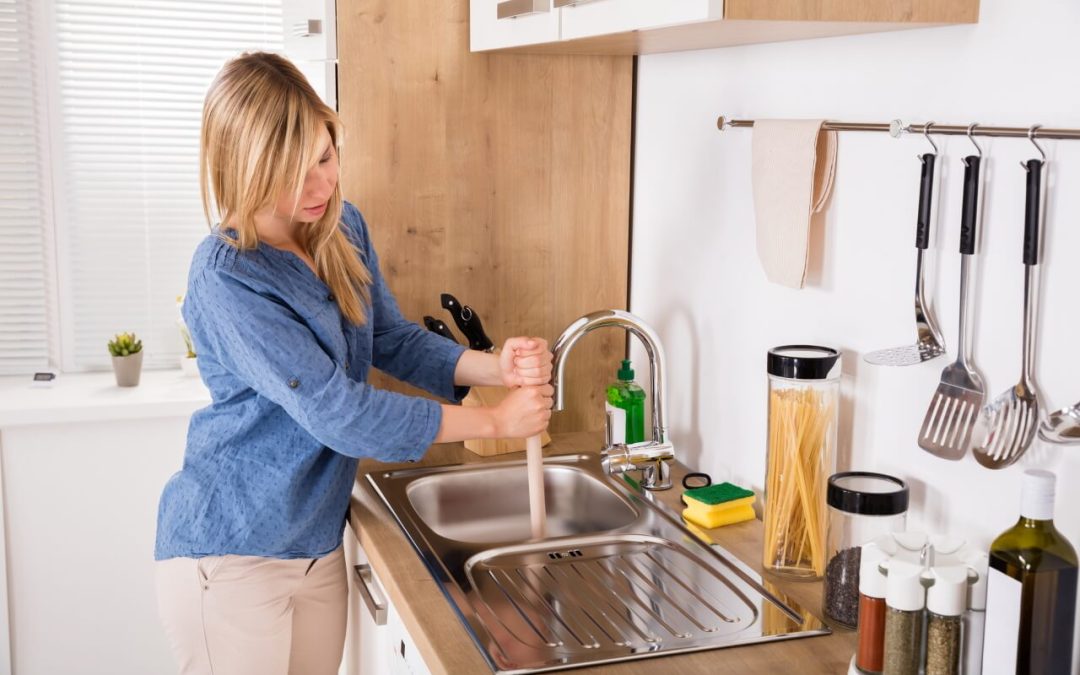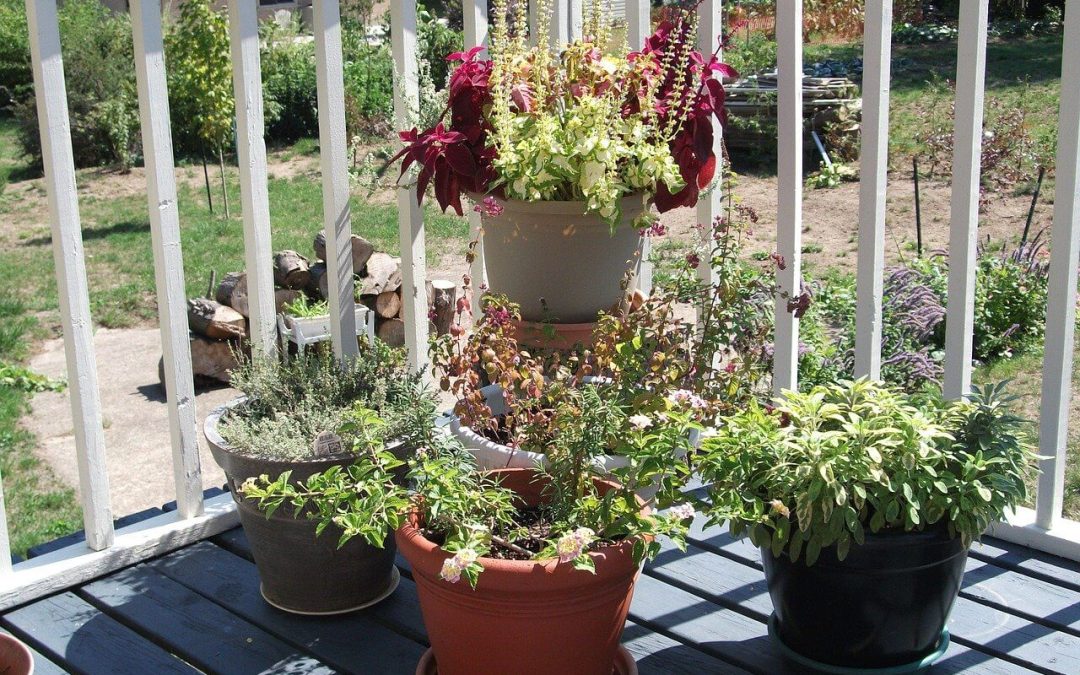
by mwonfor | Jul 18, 2023 | Community, Homeowners, Safe and Healthy Home
Safety and security are vital parts of homeownership. Taking the necessary steps to protect your property and family from threats is a worthwhile investment. Here are various measures to improve home security to keep yourself safe. From window and door locks to alarms and surveillance systems, plenty of ways to secure your property exist.
1. Improve Home Security with Upgraded Locks
All exterior doors should have strong locks and deadbolts to prevent intruders from gaining entry. Verify the windows also have locks, as these are vulnerable entry points during a burglary. Installing window locks is an easy way to secure your home; regular maintenance will keep them functioning properly.
2. Install a Home Security System
A home security system is one of the most effective ways to protect your property. Program your systems to alert you or the monitoring service if someone enters an unauthorized area of your home. Many modern security systems allow you to monitor your house remotely, giving you peace of mind wherever you are.
3. Improve the Outdoor Lighting
Good outdoor lighting is a great way to deter burglars. Install motion-sensing lights that switch on automatically when someone approaches your house, or set up timed lighting systems that come on at night and turn off in the morning. Automated home lighting gives an appearance of occupancy and makes it more challenging for criminals to break in unnoticed.
4. Start a Neighborhood Watch Program
Neighborhood watch programs are groups of community members who look out for each other and share information about suspicious activity in the area. This kind of awareness can go a long way toward preventing crime. If there isn’t a program in your neighborhood, start one to keep everyone in your area safe.
5. Install a Doorbell Camera
A doorbell camera is a great way to monitor people who approach the front door. Some models allow you to communicate with visitors without opening the door.
6. Get an Alarm Sign to Improve Home Security
Burglars are less likely to break into homes protected by a security system. Placing a sign in your yard with the name of your security company can be enough to deter some potential intruders.
Following these tips, you can create a secure environment for your family and protect your property. Home security is an ongoing process; staying informed and taking proactive steps will go a long way toward keeping your home safe.
American Home Inspection Services offers inspection services to customers in Southeastern Michigan. Contact us to request an appointment.

by mwonfor | Jun 19, 2023 | Community, Home Improvement, Homeowners
Your home’s roof is a functional feature contributing to its aesthetic appeal and protection. When selecting the right roofing material, various options are available, each with unique advantages and considerations. Here are common types of roofing materials, highlighting their characteristics, durability, and suitability for different climates and architectural styles. Let’s dive in and discover the perfect roof for your home.
Asphalt Shingles
Asphalt shingles are the most popular and widely used roofing material. They are affordable, easy to install, and come in a range of colors and styles. Asphalt offers good durability, fire resistance, and protection against the elements. They are suitable for most architectural styles and climates, making them a versatile choice.
Metal Roofing Materials
Metal roofs are known for their longevity, durability, and energy efficiency. Available in various materials such as steel, aluminum, and copper, metal roofing can withstand harsh weather conditions and offer excellent resistance to fire, wind, and insects. They are lightweight, low-maintenance, and available in various styles, including standing seam panels and metal shingles.
Clay or Concrete Tiles
Clay and concrete tiles provide a timeless, elegant look to homes. They are durable, energy-efficient, and protect against fire and harsh weather. Clay tiles have a distinct Mediterranean or Spanish architectural appeal, while concrete tiles are more versatile and can mimic the appearance of other materials like wood or slate. Clay and concrete tiles are heavier than other roofing materials and require proper structural support.
Wooden Types of Roofing Materials: Shingles or Shakes
Wood shingles or shakes impart a natural and rustic charm to homes. They are typically made from cedar, redwood, or pine and offer good insulation properties. Wood roofing requires regular maintenance to prevent rot, mold, and insect infestations. It’s important to check local building codes and fire regulations before considering wood, as some areas may have restrictions due to fire hazards.
Slate Roofing
Slate roofing is renowned for its timeless beauty, longevity, and resistance to fire and weather. Made from natural stone, slate tiles are incredibly durable and can last for a century or more. They come in different colors and textures, adding classic elegance to any home. However, slate roofing is heavy and requires professional installation.
Synthetic Roofing Materials
Synthetic roofing materials, such as synthetic slate or rubber composite shingles, offer a cost-effective alternative to natural materials. They mimic the appearance of traditional roofing materials while providing durability, ease of installation, and low maintenance. Synthetic roofing options are often lighter, making them suitable for any style of home.
When choosing the best roofing material for your house, consider factors like durability, aesthetics, climate suitability, and budget. Whether you opt for the affordability of asphalt shingles, the longevity of metal roofing, the elegance of clay or concrete tiles, the rustic charm of wood shakes, the timeless beauty of slate, or the versatility of synthetic materials, there is a roofing option to match your preferences.
Consult with a professional roofing contractor to assess your needs and get expert advice on the best material for your property. A well-chosen roof enhances a home’s curb appeal and provides protection and peace of mind for years.
American Home Inspection Services provides inspections to homebuyers and sellers in Southeastern Michigan. Contact us to schedule an appointment for our services.

by mwonfor | May 19, 2023 | Community, Home Maintenance, Homeowners
Plumbing is an essential component of any home, and keeping it in good working order is critical to avoid costly repairs and potential water damage. Many homeowners may not realize the signs of a plumbing problem until it’s too late. Here is a list of common indications of a plumbing issue in your home.
Slow Drains are Common Signs of a Plumbing Problem
Slow drainage is one of the most common signs there’s an issue with your home’s plumbing. If your sink, bathtub, or shower takes longer than usual to drain, there is likely a clog in the pipe. Attempt to dislodge the blockage using a plunger or drain cleaner, but if the problem persists, you may need to call a plumber.
Strange Noises
Gurgling or bubbling sounds from the drains or pipes could indicate a problem with your home’s plumbing system. Gurgling may occur when water isn’t draining properly. Pipes that rattle are often due to loose brackets and fasteners. You may also hear noises caused by air trapped in the water lines.
Low Water Pressure
Low water pressure in the shower or sink could be due to a blockage in a pipe. Sometimes a leak in the main lines that bring water into your home will lead to low pressure throughout the house.
Water Discoloration
If the water coming out of the tap is discolored or has a strange odor, this could be due to rust, sediment, or even a problem with the water supply. When municipal sources supply your water, they usually update customers when problems occur and offer recommendations – such as a boil water advisory – for dealing with the situation. If your water comes from a well, have it tested to determine the cause of the discoloration.
Signs of a Plumbing Problem: Damp Areas or Water Stains
Dampness or water stains on walls, ceilings, or floors can indicate a leaking pipe. Leaks can cause significant property damage and contribute to mold growth in your home if left unchecked. Call a plumber to repair leaks right away.
High Water Bills
If you notice a sudden increase in your water bill, it could be due to a leak or other plumbing problem. A leaking pipe can waste a significant amount of water and cause utility costs to skyrocket.
Bad Smells are Signs of a Plumbing Problem
Unpleasant smells coming from your drains or pipes could be an indication of a clog. The bad odor is usually due to bacteria that thrive in stagnant water. Find the source of the smell and make repairs.
Knowing the signs of a plumbing problem can help you detect issues early and avoid costly repairs. Call a professional to address the concern immediately if you notice any of these indications in your home. You’ll prevent the damage from worsening and protect your investment.
American Home Inspection Services offers home inspections to customers in Southeastern Michigan. Contact us to request our services.

by mwonfor | Apr 19, 2023 | Community, Home Improvement, Homeowners
Container gardening is an excellent way for homeowners to create a beautiful and functional garden without needing a large outdoor area or extensive gardening knowledge. Whether you want a small herb garden, a colorful display of flowers, or even vegetables and fruits, gardening in pots and planters is an excellent option. Here are a few tips and tricks to easily create a container garden.
Choose Containers
The containers you choose will be crucial to the success of your container garden. Look for plants that are the appropriate size for the herbs, flowers, and vegetables you want to grow. The containers need good drainage and materials that can withstand the elements. Clay pots are popular for container gardens, but plastic, metal, and wooden containers can also work well.
Select the Right Soil to Create a Container Garden
The soil you choose should be specifically formulated for container gardening. Look for a mix that contains perlite, vermiculite, and materials that help the soil retain moisture while allowing for proper drainage. It’s usually best to purchase or make your own potting mixture. Dirt from your yard may contain pests or diseases that can harm your plants.
Plants for Your Container Garden
When selecting plants for your container garden, consider each plant’s size and growth habits. Choose plants well-suited to your container’s size, and check their water and sunlight requirements. Consider incorporating a mix of plants with different textures, colors, and heights to create a visually interesting display.
Provide Proper Drainage
Adequate drainage is essential to the health of your plants. Make sure your container has holes in the bottom so the roots won’t sit in water, and place a layer of rocks or gravel at the bottom of the container to help improve drainage.
Water Regularly
Container gardens require more frequent watering than traditional gardens because the soil dries quickly. Water plants in containers regularly, checking the soil moisture level before each watering. Ensure the soil is moist but not waterlogged, as this can lead to root rot.
Fertilize When You Create a Container Garden
Container gardens require regular fertilization to help plants grow and thrive. Look for a fertilizer specifically formulated for containers, and follow the instructions on the package. Avoid over-fertilizing, as this can lead to unhealthy, damaged plants.
Companion Planting
Companion planting involves incorporating plants together that benefit each other in some way. For example, planting basil with tomatoes can help repel pests and improve the flavor of the tomatoes. Marigolds are great companion plants for many gardens because they help to keep insects away. Do some research on companion planting to find out which plants work well together.
Container gardening is a fun and rewarding way for homeowners to create a beautiful and functional garden space. With the right containers, soil, plants, and attention, you can easily create a garden on your deck, porch, or patio. Grow fresh herbs, vegetables, and flowers all season long.
American Home Inspection Services provides Southeastern Michigan with certified home inspection services. Contact us to request your appointment.

by mwonfor | Mar 20, 2023 | Community, Home Improvement, Homeowners
Safety is an important part of any DIY project. Whether fixing a broken shelf, painting a wall, or replacing your kitchen sink — having the right tools and knowledge to use them correctly is essential. Here are ten tips for tool safety for DIY projects around the house.
Tool Safety Tips for DIY Projects
1. Tool Safety for DIY Projects: Read the Instructions
Before you begin a project, thoroughly read the instructions. Don’t use any tool unless you understand how each work and the risk associated with its use.
2. Wear Appropriate Safety Gear
Use safety gear when tackling improvements and upgrades around the house. Depending on your project, you may need gloves, goggles, or a dust mask. Protecting yourself from injuries like cuts or splinters is important, even when using manual hand tools.
3. Tool Safety for DIY Projects: Use the Right Tool for the Job
Using the wrong tool for the job can be dangerous. If you don’t have what you need to complete a task, ask a friend or neighbor to borrow the correct tool. Check your community to find a tool-lending library. Some areas have libraries with tools you can borrow for a short period.
4. DIY Project Safety: Keep the Tools Clean
Cleaning and maintaining your tools and equipment will ensure they’re in proper working order and won’t malfunction or cause injury during use.
5. Unplug Power Tools Before Making Adjustments
Before changing settings, replacing a drill bit, or making adjustments to a power tool, unplug it. Unplugging will prevent electric shock and other injuries associated with the tool being powered on while you’re working on it.
6. Tool Safety for DIY Projects: Keep the Work Area Clear
Keep your work space clean, clutter-free, and well-organized to prevent accidents and falls due to clutter. Remove trash and prepare the area for use. After each project, do a deep clean of the space to be ready for the next task.
7. Use the Right Extension Cord
Choose the right extension cord for your project when using power tools outdoors or far from an electrical outlet. Using the wrong cord is a fire hazard.
8. Project Safety Tips: Keep Your Tools Away From Children
It’s important to keep your tools — especially power tools and sharp objects — away from children. Educate kids about the proper use of tools, explain that they are not toys, and verify they understand the dangers of using power tools.
9. Keep the Work Area Well Lit
Make sure the workbench is well-lit — especially when using hand tools requiring precision. Good lighting will help prevent missteps or mistakes from poor visibility.
10. Take Breaks When Necessary
When working on large or difficult projects, taking breaks often is important. You’ll prevent fatigue and accidents due to being tired and less alert.
These tips will help ensure your DIY project is successful and safe. Knowing the risks of each tool and taking the time to do the job right is essential for completing a job well and without injury.
American Home Inspection Services provides inspections to customers in Southeast Michigan. Contact us to request our services.

by mwonfor | Feb 20, 2023 | Community, Home Improvement, Homeowners
As the weather warms up, homeowners will be spending more time outdoors. Clean up the patio furniture and prepare the fire pit for warmer-weather entertaining. As you improve your outdoor living areas, you may notice limited storage space on the porch, patio, or deck. Here are a few ideas for patio storage to keep belongings outside while maintaining tidy outdoor spaces.
Baskets and Crates for Patio Storage
Baskets and crates are an attractive way to contain items on your porch or patio. Purchase fabric or wooden options to complement your outdoor decor. Categorize the things you need to store. Use a basket to hold small items like gardening gloves, tools, and seeds. You might use another for containing lawn games or magazines. Small crates and baskets are easy to move around, depending on where you need them.
Shelving Units
Shelving units come in all shapes and sizes, so you’ll be able to find one that fits perfectly on your porch or patio. Use shelving units to store books, games, plants, etc. They’re also great for organizing tools and supplies you may need when working in the garden or tackling other outdoor projects.
To better organize your shelving, use small plastic bins to contain each group of items. Add labels to make everything easy to find.
Build a Deck Box for Patio Storage
Consider building or investing in a weatherproof deck box if you need more storage space for larger items like outdoor cushions or pool toys. These boxes are designed for outdoor use and are usually water-resistant or waterproof, so the contents won’t get damaged by rain or snow. They come in various styles, so you can choose one that matches your decor.
Storage Furniture
Some patio furniture is designed with storage in mind. Shop for multi-use pieces, like a storage ottoman or bench with hidden compartments beneath the seat. Keep cushions and throw blankets out of the way until you need them. Find a coffee table with shelving underneath to hold books and magazines. Some outdoor tables feature built-in coolers to help keep beverages chilled.
No matter how small your porch, patio, or deck is, there is always a way to maximize storage space using creative solutions. With some planning and a few smart purchases, you’ll make the most of your outdoor living area while keeping everything within easy reach.
American Home Inspection Services offers inspection services to customers in Southeast Michigan. Contact us to request an appointment.






